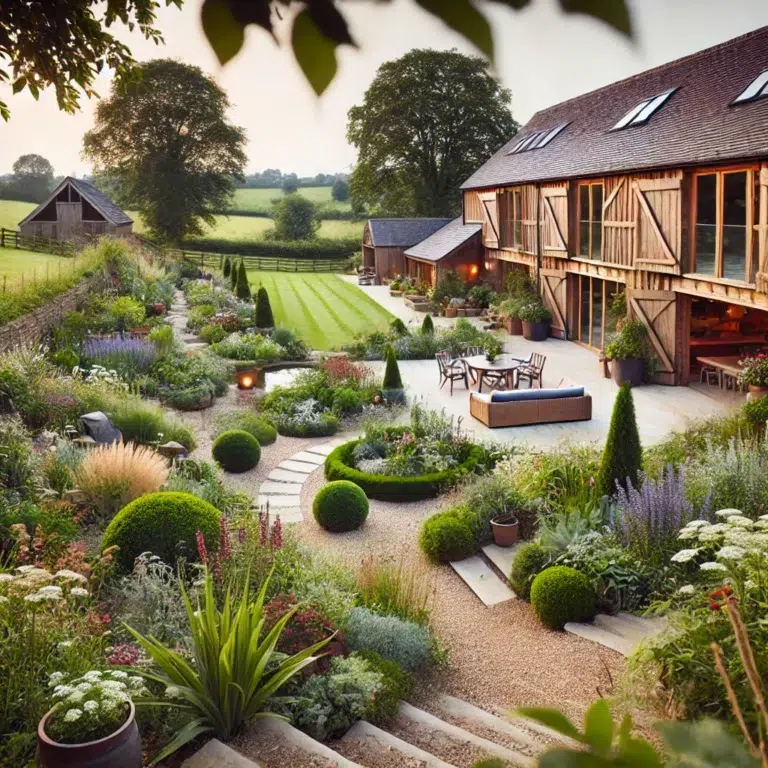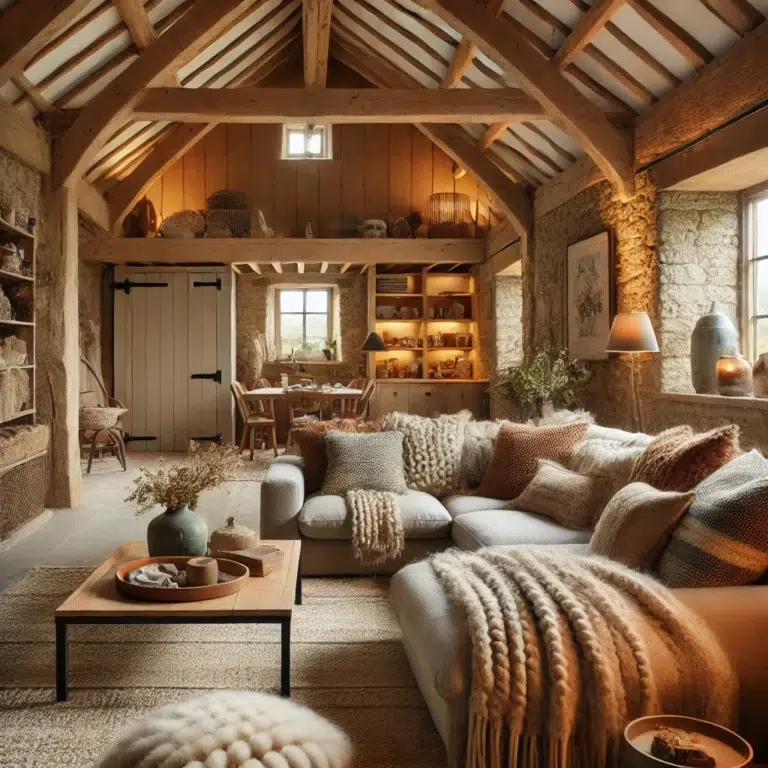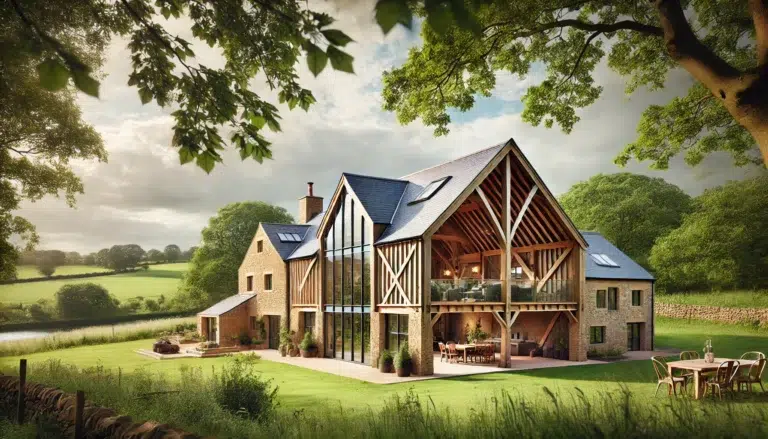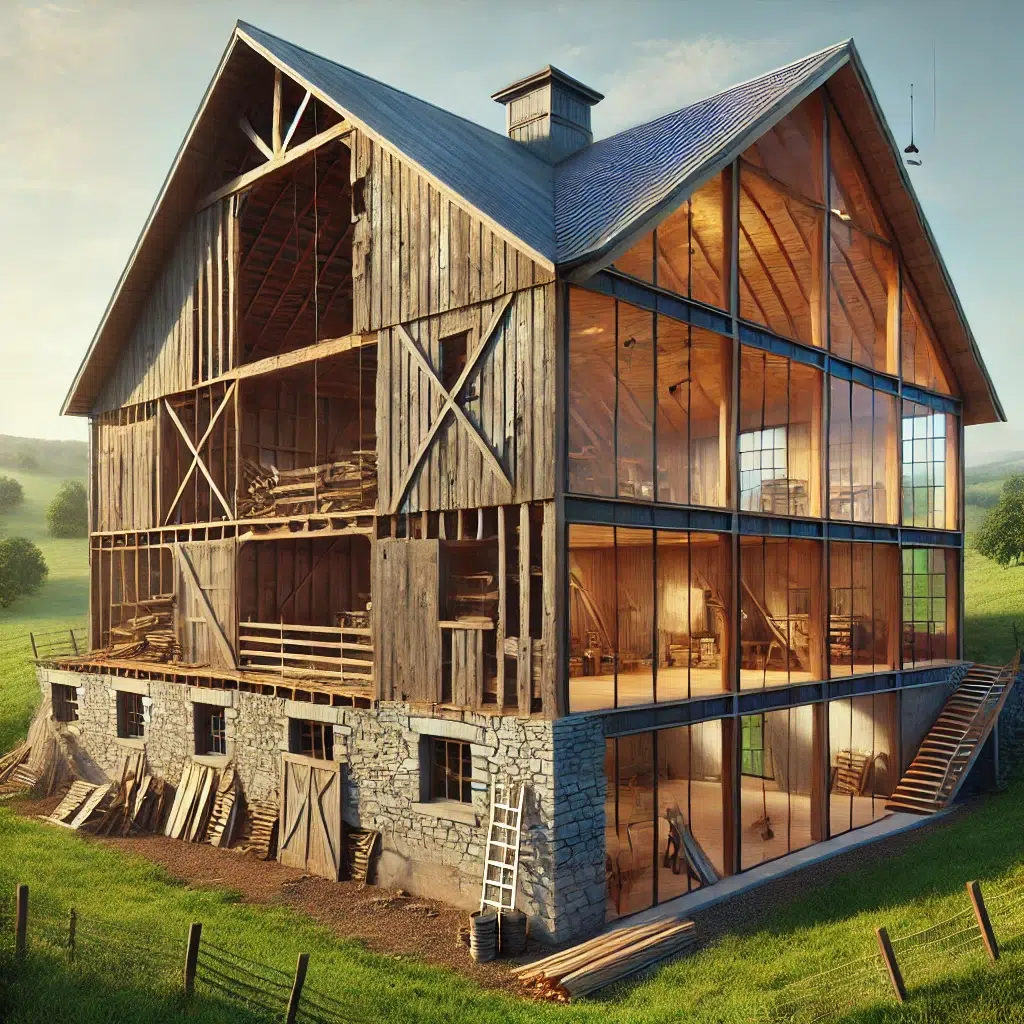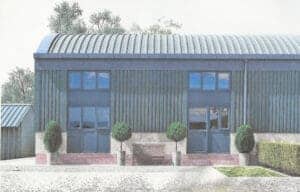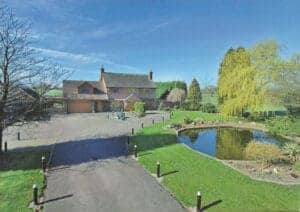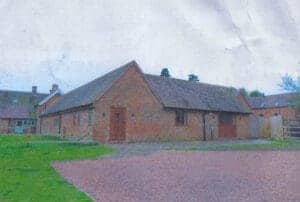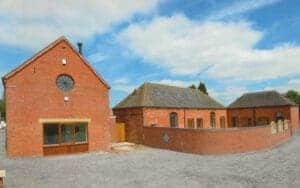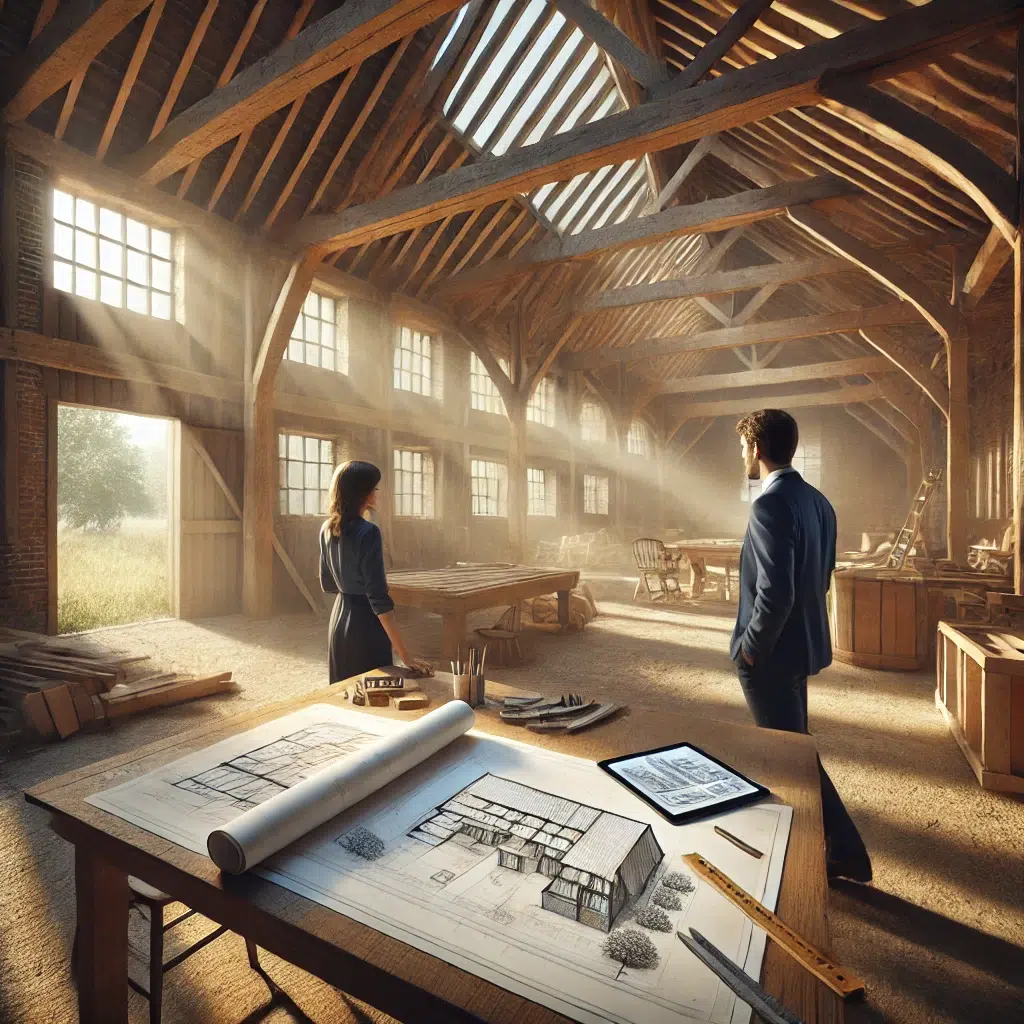
Embarking on a barn conversion is an exciting opportunity to transform a historic structure into a stunning, functional home or workspace. However, successful projects depend on meticulous barn conversion planning. From understanding legal requirements to designing a layout that blends modern living with rustic charm, having a clear plan is essential.
At KFM, we specialise in guiding clients through every stage of the barn conversion planning process. With years of experience managing complex conversions, we know how to balance timelines, budgets, and the unique challenges that barns present.
In this post, we’ll break down the critical steps in planning a barn conversion, highlighting key milestones and offering practical insights to keep your project on track. Whether you’re starting from scratch or refining your vision, this guide will help you navigate the journey with confidence and clarity.
Initial Planning and Design Phase

The success of any barn conversion begins with thorough barn conversion planning. This initial phase sets the foundation for the entire project, ensuring that your vision is achievable and complies with all legal and structural requirements.
Key Steps in the Initial Planning and Design Phase
1. Consultation and Site Assessment
- Before diving into design work, a detailed site visit is essential. At KFM, we evaluate the condition of the barn, including its structural integrity, layout, and suitability for conversion. This step helps uncover any challenges early, such as timber decay, foundation issues, or poor access.
- Why it matters: Understanding the barn’s current state allows us to plan effectively, ensuring safety and feasibility for the project.
2. Design and Layout Planning
- Working closely with architects and clients, we create a design that preserves the barn’s character while meeting modern living needs. This involves:
- Developing initial layouts.
- Incorporating natural light through strategic window placements.
- Balancing functionality with aesthetics to maintain the barn’s unique appeal.
- Why it matters: A strong design plan aligns your vision with the barn’s structural possibilities, ensuring a seamless build later in the timeline.
3. Securing Permissions and Regulatory Approvals
- Barn conversions often require:
- Planning Permission: Especially if the barn is listed or located in a conservation area.
- Building Regulations Approval: To ensure compliance with modern safety, energy efficiency, and building standards.
- Navigating these regulations can feel complex, but KFM’s expertise ensures all legal requirements are handled efficiently, saving you time and stress.
Estimated Timeline:
The barn conversion planning phase typically takes 2-4 months, depending on the complexity of the design and permissions. Delays can occur when securing approvals, particularly with listed buildings, but careful preparation helps keep the process on track.
Structural Assessments and Preparations
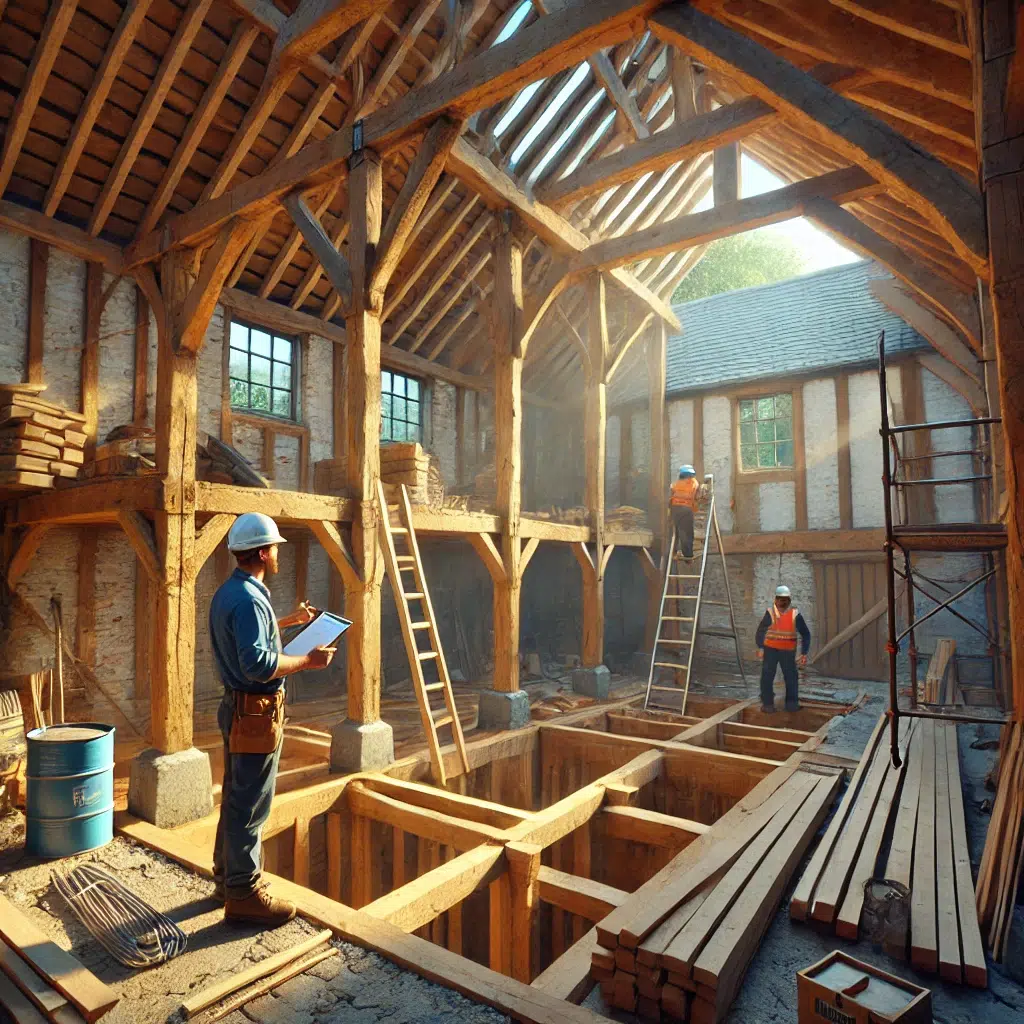
Once the design is finalised and permissions are in place, the next stage in barn conversion planning involves detailed structural assessments and preparatory work. This phase ensures the barn is stable and ready to support the planned modifications.
Key Steps in Structural Assessments and Preparations
- Structural Surveys and Reinforcements
- Before any building work begins, a professional structural survey identifies potential issues with foundations, walls, or roof beams. Older barns, in particular, often require reinforcement to address weaknesses caused by age or decay.
- At KFM, we conduct comprehensive structural assessments and recommend solutions like:
- Reinforcing timber beams to restore their load-bearing capacity.
- Repairing or underpinning foundations to ensure stability.
- Why it matters: Addressing these issues early prevents costly delays and guarantees the safety of the entire project.
- Foundation and Framing Preparations
- Depending on the results of the survey, preparation may include:
- Strengthening existing foundations or laying new ones to accommodate modern requirements.
- Repairing or replacing structural elements like roof trusses and frames while preserving as much original material as possible.
- KFM specialises in balancing structural integrity with heritage conservation, ensuring the barn’s historic character is maintained.
- Depending on the results of the survey, preparation may include:
- Utilities and Infrastructure Assessment
- Older barns often lack essential services such as water, electricity, and drainage. This step involves planning and installing modern utilities while minimising disruption to the barn’s aesthetics.
- Key considerations include:
- Connecting to mains services or planning for off-grid solutions (e.g., septic tanks, solar power).
- Mapping out wiring, plumbing, and insulation to integrate seamlessly into the barn’s design.
Estimated Timeline:
This phase typically takes 1-3 months, depending on the barn’s condition and the extent of preparatory work required. Structural challenges can add time, but proper planning mitigates surprises.
Main Construction and Building Phase

With the structural assessments complete and preparations made, the main construction phase begins. This stage brings your plans to life, transforming the barn from a historical shell into a stunning, fully functional space. Effective barn conversion planning at this stage ensures the project runs smoothly and efficiently.
Key Steps in the Main Construction Phase
- Insulation, Heating, and Plumbing Installations
- Many barns were not originally designed for residential use, making insulation a top priority for energy efficiency and comfort. Key tasks include:
- Installing high-performance insulation for walls, floors, and roofs to meet modern energy standards.
- Adding heating systems, such as underfloor heating or eco-friendly alternatives like air-source heat pumps.
- Integrating modern plumbing systems for kitchens, bathrooms, and utility spaces.
- Why it matters: Proper insulation and heating transform a drafty barn into a warm, energy-efficient home.
- Many barns were not originally designed for residential use, making insulation a top priority for energy efficiency and comfort. Key tasks include:
- Interior Walls and Room Layouts
- The barn’s interior begins to take shape as new walls are constructed, defining spaces such as bedrooms, living areas, and kitchens. If the design includes features like mezzanine levels, this is where they are installed.
- KFM prioritises layouts that respect the barn’s original structure while optimising functionality. Features such as exposed beams and vaulted ceilings add character while maintaining an open, airy feel.
- Why it matters: Thoughtful design ensures modern living needs are met without sacrificing the barn’s unique charm.
- Windows, Doors, and External Upgrades
- Many barns require new or upgraded windows and doors to improve energy efficiency and aesthetics while complying with conservation requirements. Tasks include:
- Installing double or triple-glazed windows that suit the barn’s style.
- Upgrading external doors for insulation, security, and visual appeal.
- In some cases, roof upgrades or cladding repairs are also completed at this stage.
- Many barns require new or upgraded windows and doors to improve energy efficiency and aesthetics while complying with conservation requirements. Tasks include:
Estimated Timeline:
The main construction phase typically takes 3-6 months, depending on the project’s scale, complexity, and structural challenges. Larger or multi-phase projects may take longer, but careful barn conversion planning ensures progress remains steady.
Interior Finishing and Customisation

The interior finishing phase is where the vision truly comes to life. With the core structure complete, attention shifts to the details that make the barn unique, comfortable, and reflective of the client’s style. Thoughtful barn conversion planning ensures that this stage balances the barn’s original character with contemporary finishes.
Key Steps in the Interior Finishing Phase
- Flooring and Wall Finishes
- The choice of materials plays a vital role in maintaining the barn’s rustic charm while delivering a modern finish. Common options include:
- Flooring: Reclaimed wood, natural stone tiles, or polished concrete for durability and aesthetics.
- Walls: A mix of exposed brick, timber panelling, or plaster finishes to highlight the barn’s heritage.
- Why it matters: The right finishes bring warmth and texture to the interior, enhancing the barn’s character while providing durability for modern living.
- The choice of materials plays a vital role in maintaining the barn’s rustic charm while delivering a modern finish. Common options include:
- Kitchen, Bathroom, and Lighting Installations
- Modern amenities are seamlessly integrated to make the space functional and stylish:
- Kitchens: Bespoke kitchen cabinetry tailored to fit the barn’s unique dimensions.
- Bathrooms: High-quality fixtures that combine luxury with practicality, such as freestanding baths or walk-in showers.
- Lighting: Statement lighting fixtures, such as industrial-style pendants or recessed lighting, to complement exposed beams and create ambiance.
- Why it matters: Functional spaces like kitchens and bathrooms need to meet contemporary standards while respecting the barn’s aesthetics.
- Modern amenities are seamlessly integrated to make the space functional and stylish:
- Decorative Elements and Personalisation
- This final step involves adding furnishings, decor, and personalized touches that reflect the client’s tastes:
- Vintage or bespoke furniture pieces.
- Carefully selected decor to enhance the rustic theme (e.g., exposed metalwork, artisan fixtures).
- Soft furnishings like rugs and textiles that add warmth and comfort to open spaces.
- Why it matters: These final details ensure the barn feels like home, combining modern style with its rich history.
- This final step involves adding furnishings, decor, and personalized touches that reflect the client’s tastes:
Estimated Timeline:
The interior finishing and customisation phase typically takes 1-3 months, depending on the level of detail, customisation, and client preferences. At KFM, we work closely with clients to ensure their vision is brought to life efficiently and seamlessly.
Final Inspections, Snagging, and Handover
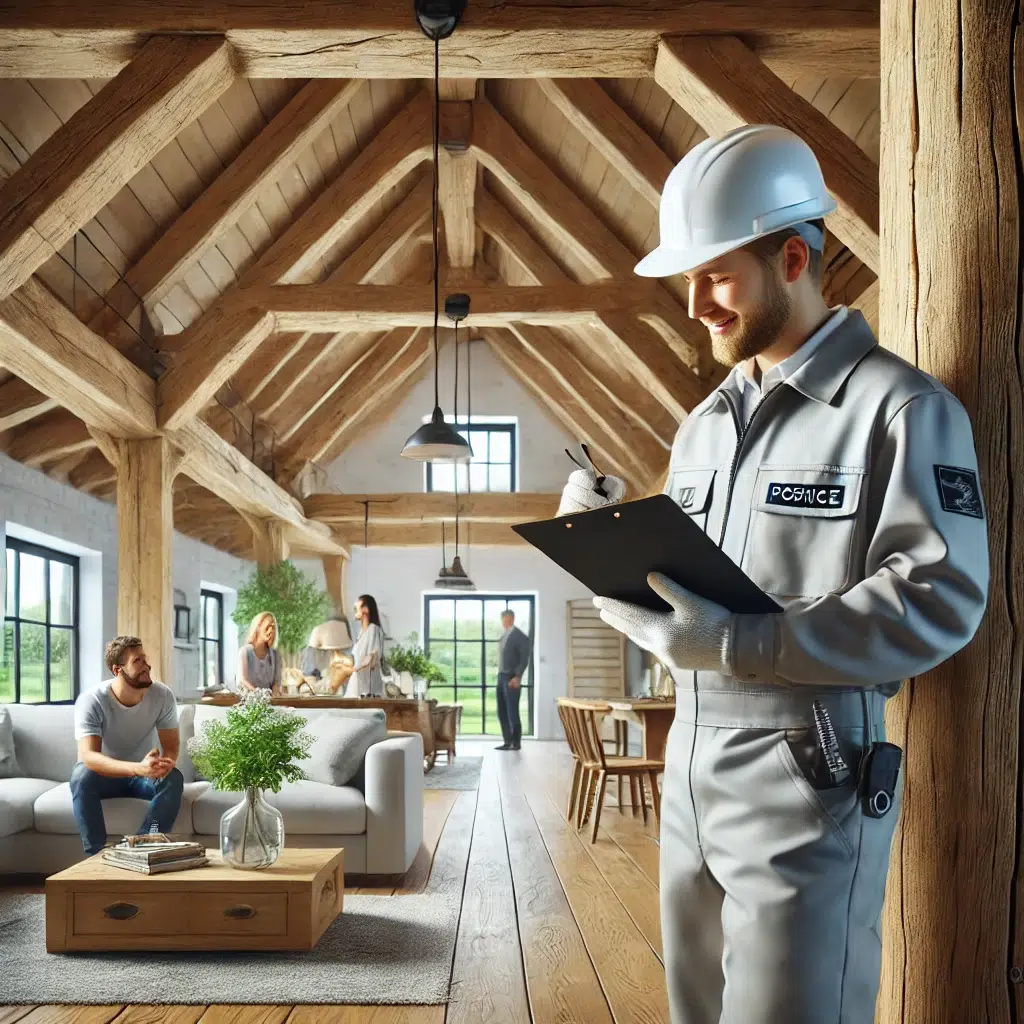
The final stage of any barn conversion is about ensuring perfection. After months of planning and hard work, this phase focuses on final quality checks, resolving minor issues, and delivering a home that exceeds expectations. Proper barn conversion planning ensures this final stage is seamless and stress-free.
Key Steps in the Final Phase
- Final Quality Inspections
- KFM conducts a thorough inspection of the completed barn conversion, ensuring:
- All work meets the highest quality standards.
- Safety and building regulations are fully complied with.
- The client’s vision has been successfully brought to life.
- Why it matters: A meticulous final inspection guarantees the integrity of the work and gives clients peace of mind that every detail has been addressed.
- KFM conducts a thorough inspection of the completed barn conversion, ensuring:
- Snagging and Minor Adjustments
- Snagging is the process of identifying and fixing any minor issues or finishing touches that may need attention, such as:
- Paint touch-ups.
- Adjusting doors, windows, or fittings.
- Ensuring plumbing, heating, and electrical systems are working perfectly.
- KFM’s team works swiftly to resolve all snagging items, ensuring nothing is overlooked before handover.
- Snagging is the process of identifying and fixing any minor issues or finishing touches that may need attention, such as:
- Official Handover to the Client
- Once snagging is complete, the project is ready for handover. During this stage, KFM provides:
- A detailed walkthrough of the finished space to demonstrate features and systems.
- Documentation, including warranties, maintenance guidelines, and certificates for any installed systems.
- Ongoing support where required to ensure a smooth transition.
- Why it matters: The handover process is about celebrating the successful completion of the barn conversion and ensuring clients feel confident and informed about their new space.
- Once snagging is complete, the project is ready for handover. During this stage, KFM provides:
Estimated Timeline:
The final inspections, snagging, and handover typically take 1 month, ensuring every detail meets KFM’s exceptional standards of quality and craftsmanship.
Conclusion
A successful barn conversion is the result of careful barn conversion planning, expert execution, and a commitment to preserving the unique character of the building while delivering modern comforts. From the initial planning phase to the final handover, each stage plays a vital role in ensuring the project’s success.
At KFM, we pride ourselves on delivering seamless barn conversions with a structured, detail-oriented approach. Our expertise in navigating planning permissions, tackling structural challenges, and incorporating bespoke interior finishes allows us to create spaces that are as functional as they are beautiful.
If you’re ready to take the next step in your barn conversion planning journey, let KFM be your trusted partner. Our team will guide you through every phase, ensuring your vision is brought to life with precision, quality, and care.



